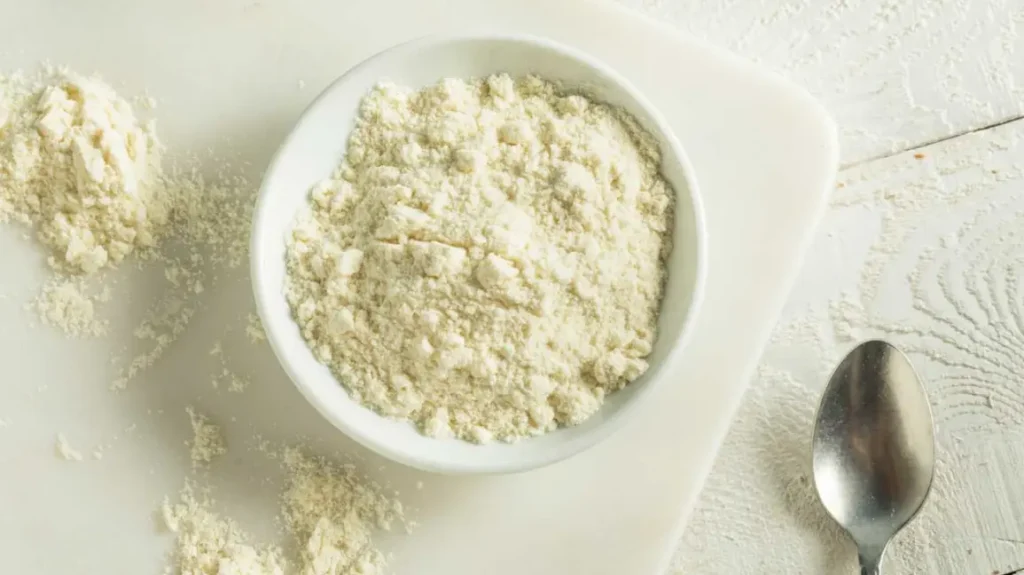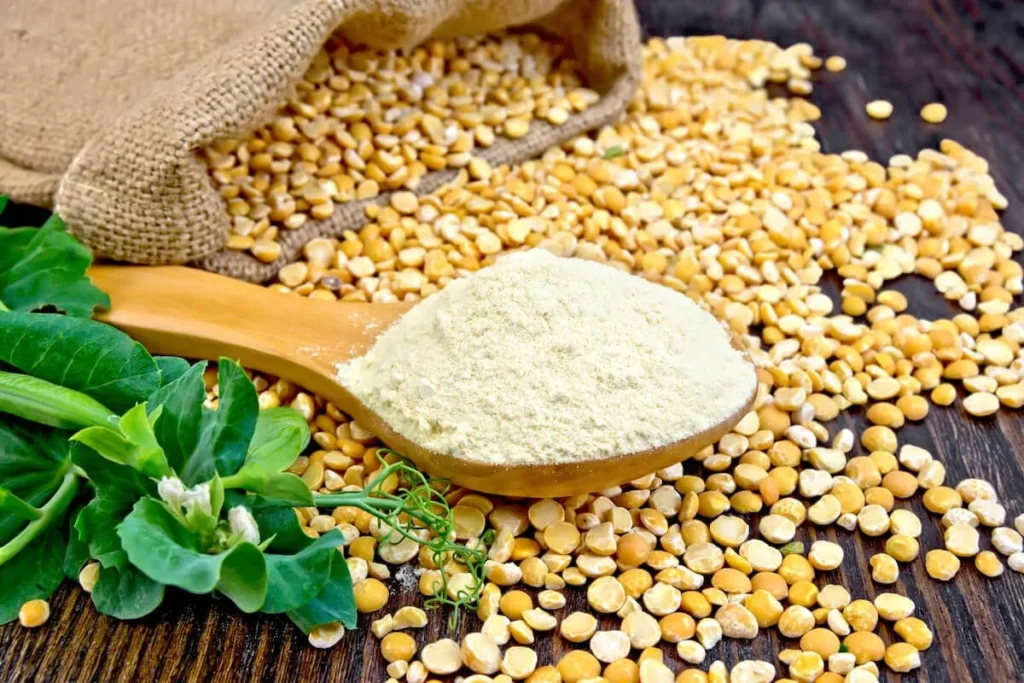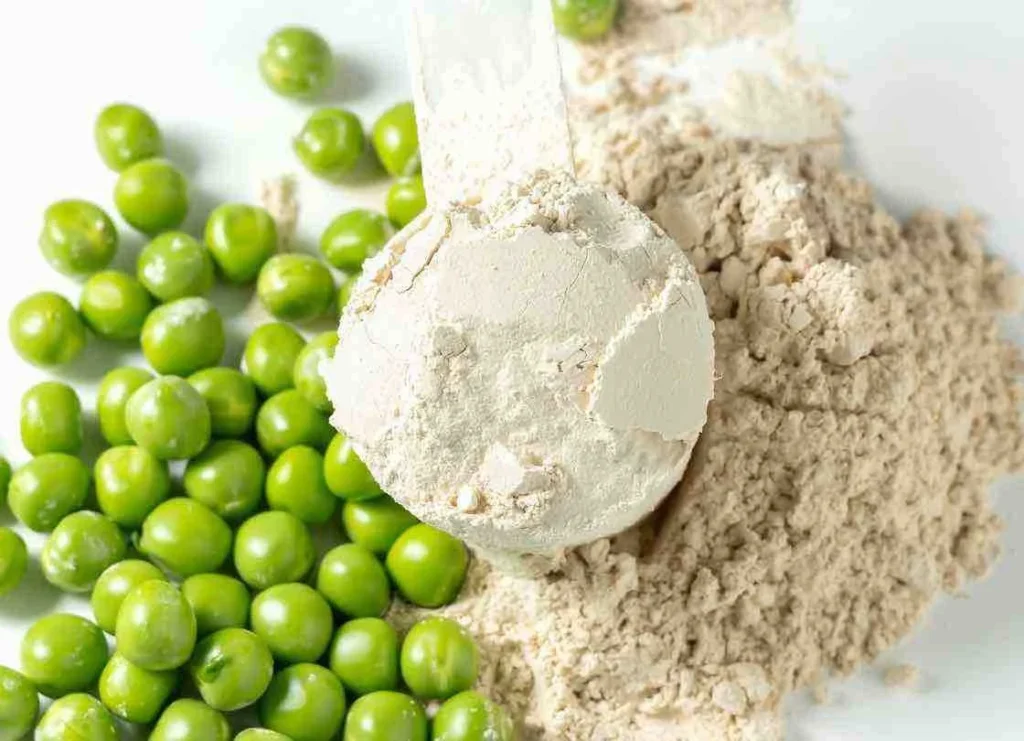Le proteine in polvere sono un elemento fondamentale nell'arsenale di atleti, appassionati di fitness e persone attente alla salute. Ma orientarsi tra i vari integratori può essere un'impresa ardua. La domanda più grande si riduce spesso a una classica resa dei conti: proteine di origine vegetale contro proteine di origine animale. Su questo ring dominano due campioni: Proteine del siero di latte, il re che regnava da tempo, e Proteine del pisello, il potente sfidante a base vegetale.
Il dibattito "proteine del pisello vs. proteine del siero del latte" non è solo una questione di preferenze: si tratta di trovare l'abbinamento perfetto per il vostro corpo, i vostri obiettivi e i vostri valori. Volete massimizzare il guadagno muscolare? Avete problemi di gonfiore e di digestione? Seguite una dieta vegana o siete preoccupati per il vostro impatto ambientale?
Questa guida definitiva fornisce un confronto completo e basato su prove delle proteine del pisello e del siero di latte. Analizzeremo tutti gli aspetti, dall'efficacia per lo sviluppo muscolare ai profili nutrizionali, dalla digeribilità alla sostenibilità, in modo che possiate scegliere con sicurezza la polvere proteica più adatta a voi.
Che cos'è la proteina del siero di latte? Una rapida panoramica
La proteina del siero del latte è una proteina di origine animale derivata dal latte. È il liquido traslucido che rimane durante il processo di produzione del formaggio. Questo liquido viene filtrato ed essiccato per creare la polvere proteica che da decenni rappresenta il gold standard nel mondo del fitness.
Come è fatto
Durante la produzione del formaggio, al latte vengono aggiunti degli enzimi che ne provocano la cagliatura. La cagliata solida viene utilizzata per produrre il formaggio, mentre il liquido che rimane è il siero. Questo siero viene poi pastorizzato e trasformato in polvere.
Tipi di siero di latte
In genere si trovano tre tipi principali di proteine del siero di latte:
- Concentrato (WPC): Contiene circa il 70-80% di proteine, mentre il resto è costituito da lattosio (zucchero del latte) e grassi. È il tipo più comune e generalmente più gustoso.
- Isolato (WPI): Ulteriormente lavorato per rimuovere la maggior parte del lattosio e dei grassi, vanta un contenuto proteico di 90% o superiore. È un'ottima scelta per chi ha una lieve sensibilità al lattosio.
- Idrolizzato (WPH): Questo siero di latte è "pre-digerito", cioè la proteina è stata scomposta in peptidi più piccoli per un assorbimento più rapido possibile. È anche il più costoso.
I principali pro e contro in sintesi
- Pro: Profilo aminoacidico completo, alto contenuto di BCAA, rapida digestione, gusto cremoso.
- Contro: Contiene latticini e lattosio, maggiore impatto ambientale, non adatto ai vegani.
Che cos'è la proteina del pisello? La centrale elettrica a base vegetale
La proteina di pisello è una proteina vegetale di alta qualità estratta dai piselli spaccati gialli. Negli ultimi anni ha conosciuto un'impennata di popolarità, diventando l'alternativa ideale per chi cerca un'opzione senza latticini e vegana senza compromettere le prestazioni.
Come è fatto
Il processo prevede l'essiccazione e la macinazione dei piselli fino a ottenere una farina fine. Questa farina viene poi mescolata con acqua per separare la fibra e l'amido, lasciando una pasta concentrata di proteine, vitamine e minerali. Questa pasta viene poi essiccata e macinata in una polvere fine.
Le proteine del pisello sono proteine "complete"?
È una domanda frequente. Una proteina "completa" contiene tutti i nove aminoacidi essenziali (EAA) che il corpo non è in grado di produrre da solo. Il siero di latte è naturalmente completo. Le proteine del pisello contengono tutti e nove gli EAA, ma sono relativamente povere di uno di essi: metionina.
Tuttavia, nella pratica questo problema si presenta raramente. In primo luogo, la dieta della maggior parte delle persone compensa facilmente questo problema, poiché la metionina è presente in abbondanza in molti altri alimenti come riso, avena, noci e pesce. In secondo luogo, alcuni marchi, come BSTBIO Proteine del piselloLe proteine del pisello sono arricchite da altre proteine vegetali (come quelle del riso) per creare un profilo aminoacidico completo direttamente nel misurino.
I principali pro e contro in sintesi
- Pro: Ipoallergenico (senza latticini, soia, glutine e noci), vegano, facilmente digeribile, a basso impatto ambientale.
- Contro: Con un basso contenuto di metionina (facilmente compensabile), può avere un sapore "terroso" o una consistenza granulosa.
La resa dei conti: Proteine del pisello contro proteine del siero di latte testa a testa
Mettiamo questi due contendenti sul ring e confrontiamoli nelle categorie più importanti.
Tabella di confronto master
| Caratteristica | Proteine del siero di latte | Proteine del pisello | Vincitore |
|---|---|---|---|
| Fonte di proteine | A base animale (latticini) | A base vegetale (legumi) | Dipende dalla dieta |
| Crescita muscolare | Eccellente (Alta Leucina) | Eccellente (efficacia comprovata) | Cravatta |
| Profilo degli aminoacidi | Completo (ad alto contenuto di BCAA) | Quasi completo (meno metionina) | Siero di latte (con un leggero margine) |
| Velocità di digestione | Veloce | Medio | Dipende dall'obiettivo |
| Digeribilità e allergeni | Contiene lattosio/derivati | Ipoallergenico, senza lattosio | Pisello |
| Sostenibilità | Maggiore impatto ambientale | Minore impatto ambientale | Pisello |
| Gusto e consistenza | Cremoso, delicato | Terroso, può essere grintoso | Siero di latte (soggettivo) |
| Costo | Varia, spesso a prezzi accessibili | Generalmente comparabili | Cravatta |
Round 1: Crescita muscolare e prestazioni
Questo è il test definitivo per molti utenti. L'efficacia di una proteina per la sintesi proteica muscolare (MPS) è in gran parte determinata dal suo contenuto di aminoacidi a catena ramificata (BCAA), in particolare leucina. Le proteine del siero di latte sono notoriamente ricche di leucina.
Quindi, le proteine del pisello hanno una possibilità? Assolutamente sì. Un importante studio del 2015 pubblicato sulla rivista Rivista della Società Internazionale di Nutrizione Sportiva ha messo a confronto due gruppi di atleti per 12 settimane. Un gruppo ha assunto proteine del siero del latte, l'altro proteine del pisello. Il risultato? Non è stata riscontrata alcuna differenza significativa nell'aumento dello spessore muscolare tra i due gruppi. Studi successivi hanno replicato questi risultati, dimostrando che le proteine del pisello stimolano le MPS e promuovono l'aumento della forza con la stessa efficacia delle proteine del siero del latte, se consumate in quantità sufficienti.
Verdetto: Per la costruzione dei muscoli, la scienza dimostra che sono sorprendentemente alla pari. È un pareggio.
Round 2: Profilo degli aminoacidi
Come già detto, la proteina del siero di latte è una proteina completa con un'alta concentrazione di tutti e nove gli EAA. Anche le proteine del pisello sono ricche di BCAA, ma hanno un contenuto inferiore di metionina. Sebbene il siero del latte vinca questa categoria sulla carta, la differenza pratica per la maggior parte delle persone è trascurabile, in quanto la loro dieta complessiva colma questa piccola lacuna.
Verdetto: Il siero di latte vince con un leggero margine tecnico, ma non è un ostacolo per le proteine del pisello nelle applicazioni reali.
Round 3: Digestione, allergie e salute dell'intestino
È qui che le proteine del pisello brillano veramente. Il principale svantaggio del siero di latte è che contiene lattosiouno zucchero che fino a 68% della popolazione mondiale ha difficoltà a digerire, causando gonfiore, gas e crampi allo stomaco. Anche il siero di latte isolato, che contiene pochissimo lattosio, può scatenare reazioni in chi è allergico ai latticini.
Le proteine del pisello, invece, sono naturalmente ipoallergenico. È privo di latticini, lattosio, glutine, soia e frutta a guscio, il che lo rende una scelta incredibilmente sicura per quasi tutti, soprattutto per chi ha uno stomaco sensibile.
Verdetto: La proteina di pisello è il campione indiscusso per quanto riguarda la digeribilità e per chi ha sensibilità alimentari.
Round 4: Sostenibilità e impatto ambientale
La produzione di prodotti di origine animale, compresi i latticini, ha un'impronta ambientale significativamente maggiore rispetto all'agricoltura di origine vegetale. La coltivazione dei piselli richiede meno acqua e meno terra rispetto all'allevamento delle mucche da latte e produce molte meno emissioni di gas serra.
Verdetto: Se la sostenibilità è una priorità per voi, la proteina di pisello è il chiaro vincitore.
Chi dovrebbe scegliere le proteine whey?
Le proteine del siero del latte rimangono una scelta eccellente se:
- Si cerca un assorbimento il più rapido possibile, soprattutto nel post-allenamento.
- Non avete problemi a digerire i latticini o il lattosio.
- La priorità è un contenuto naturalmente elevato di BCAA e leucina per grammo.
- Preferite un gusto e una consistenza più cremosi, simili a quelli di un frullato.
Chi dovrebbe scegliere le proteine del pisello?
Le proteine del pisello sono la scelta ideale se:
- Siete vegani, vegetariani o seguite una dieta a base vegetale.
- Siete intolleranti al lattosio o avete un'allergia o una sensibilità ai latticini.
- Avete uno stomaco sensibile e spesso soffrite di gonfiore con altre proteine in polvere.
- La sostenibilità ambientale è un fattore chiave nelle vostre decisioni di acquisto.
- Siete alla ricerca di una fonte proteica pulita e ipoallergenica.
Considerazioni pratiche: Gusto, miscelabilità e costi
Siamo onesti: perché un integratore sia efficace, bisogna essere disposti ad assumerlo con costanza.
- Gusto e consistenza: Le proteine del siero del latte hanno generalmente un sapore più delicato e cremoso, che molte persone preferiscono. Le proteine dei piselli possono avere un sapore più "terroso" e una consistenza leggermente più grintosa. Tuttavia, le proteine del pisello di alta qualità, come
BSTBIOhanno migliorato notevolmente questo aspetto, offrendo una miscela più omogenea. Un consiglio da professionista: Mescolate le proteine del pisello con latte vegetale (d'avena o di mandorle) e una banana o un po' di cannella per creare un frullato delizioso e omogeneo. - Costo: In passato, il siero di latte era molto più economico. Oggi i prezzi sono molto competitivi. Un isolato di proteine del pisello di alta qualità ha spesso un prezzo simile a quello di un isolato di proteine del siero di latte, il che rende il costo un fattore meno decisivo.
Domande frequenti (FAQ)
D: Posso mescolare proteine di pisello e proteine del siero di latte?
R: Sì, è possibile. In questo modo si possono ottenere i vantaggi di una digestione sia rapida (siero di latte) che media (pisello), oltre a un profilo aminoacidico diversificato.
D: Le proteine del pisello causano gonfiore o infiammazione?
R: Le proteine del pisello sono generalmente considerate antinfiammatorie ed è molto meno probabile che causino gonfiore rispetto al siero di latte perché sono prive di lattosio. Un eventuale gonfiore sarebbe probabilmente dovuto a un consumo troppo rapido o ad altri ingredienti presenti nel prodotto.
D: Qual è il migliore per la perdita di peso?
R: Entrambi sono efficaci. Favoriscono la sazietà (la sensazione di pienezza), che aiuta a controllare l'appetito. Scegliete quello che si adatta alle vostre esigenze dietetiche e che vi piace di più bere.
D: Qual è il momento migliore per assumere proteine in polvere?
R: Per la crescita muscolare, il fattore più importante è il rispetto dell'apporto proteico totale giornaliero. Tuttavia, consumare un frullato proteico entro un'ora o due dall'allenamento può contribuire ad avviare il processo di recupero.
Il verdetto finale: Qual è quello che fa per voi?
Il dibattito "proteine del pisello contro proteine del siero di latte" non ha un unico vincitore, ma ha il tuo vincitore. La migliore polvere proteica è quella che si allinea alle esigenze del vostro corpo, ai vostri obiettivi di fitness e ai vostri valori personali.
- Se siete un atleta con lo stomaco di ferro e volete un'opzione classica ad azione rapida, siero di latte è una scelta solida.
- Se siete altri - vegani, intolleranti al lattosio, attenti all'ambiente o semplicemente alla ricerca di una proteina pulita ed efficace che sia delicata per l'intestino - non potete fare a meno di pensare che la vostra dieta sia un'ottima scelta.proteine di pisello non è solo un'alternativa, ma è probabilmente la scelta migliore.
Con la scienza moderna che ne conferma l'efficacia per la costruzione muscolare, la proteina di pisello ha dimostrato di essere un vero e proprio concentrato di energia. Garantisce i risultati desiderati senza disagi digestivi e senza problemi ambientali.



